Messier Marathon Part 1 (Introduction and Early Objects)
The Messier Marathon is an event that happens around new moon in March. Charles Messier was a French astronomer several hundred years ago. He was looking for comets, but kept finding things that he thought were comets. He didn’t know what some of them were (many turned out to be other galaxies), but he started cataloging them so he didn’t get fooled by the same object more than once. This list became was is known as the Messier Objects, designated M1 through M110. As it turns out, in March, if you go to a dark enough site and live in the right set of latitudes, you can see all 110 in a single night. The night starts with M77, visible for only a little while after sunset and progresses to M30, visible only a little while before sunset.
This past Saturday night, I participated in my fifth Messier Marathon. The second one I did was 10 years ago, at the Baker Observatory near Springfield, MO. The first one was actually preparation for that, a few nights earlier. I tried a “full moon” marathon a few years later just to see if it could be done. I had a 12.5″ Dobsonian and I recall getting quite a few, but giving up early in the night because galaxies were extremely hard to find. My most successful marathon was the next year, when I saw 109 objects, missing only M30.
This year was a close second, in a slightly different way. I decided to do a photographic marathon, trying to image all of the objects. I failed to capture M55 and M30, the former due to trees and the latter due to it’s proximity to the sun. All shots were with a Canon T2i. Early in the evening, I was doing most of my shots with an Astronomik Light Pollution Filter. I popped it out later in the night just to see the difference. As for the lenses, I used a Canon 200mm f2.8 early in the night, my Celestron Edge HD for M13 and M52, and my Astrotech refractor for the later objects. I’ve processed these as best as I could, but I didn’t go to any great efforts with most of them. The 200mm lens does have some chromatic aberration, but I’ve tried to fix that with Photoshop.
This event was a members-only star party, hosted by the Howard Astro League, at Alpha Ridge Community Park in Marriotsville, Maryland.
I captured the following shot of the sunset before we were able to see any Messier objects. (Click any image for a higher-res shot).
The “early objects” are one of the major challenges of the evening, however every marathon I’ve done, I’ve been able to see them all. The first three are M77, M74 and M33. M77 is a barred spiral galaxy with a bright core, and M74 and M33 are spiral galaxies with fairly low surface brightness. It can be quite a challenge to see them in evening twilight.
Here’s M77 (the tiny dot just below the dimmest star in the diagonal line of four at the top):
Here’s M74. It’s centered here and quite difficult to make out:
Here’s M33, similarly dim:
The last of the early objects are M31 and its two satellite galaxies, M32 and M110. M31 is very easy to find due to its bright core. M32 is also easy because it’s a tiny elliptical galaxy. M110 is tougher, because it has low surface bright. This picture shows all three.
Up next, a slew of open clusters with a few nebulae thrown in there.

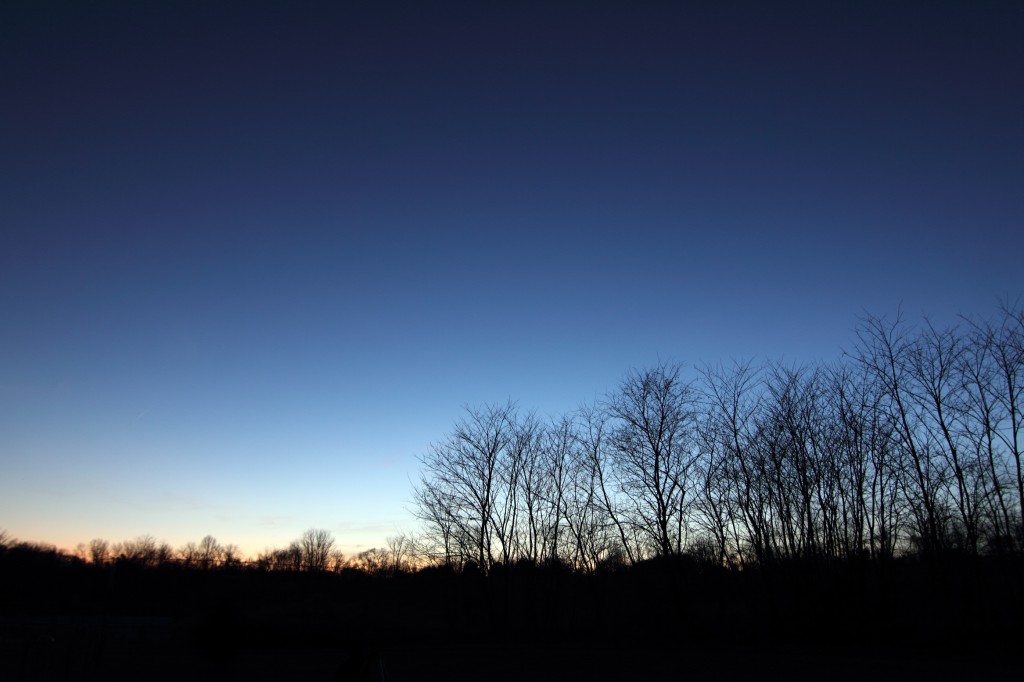
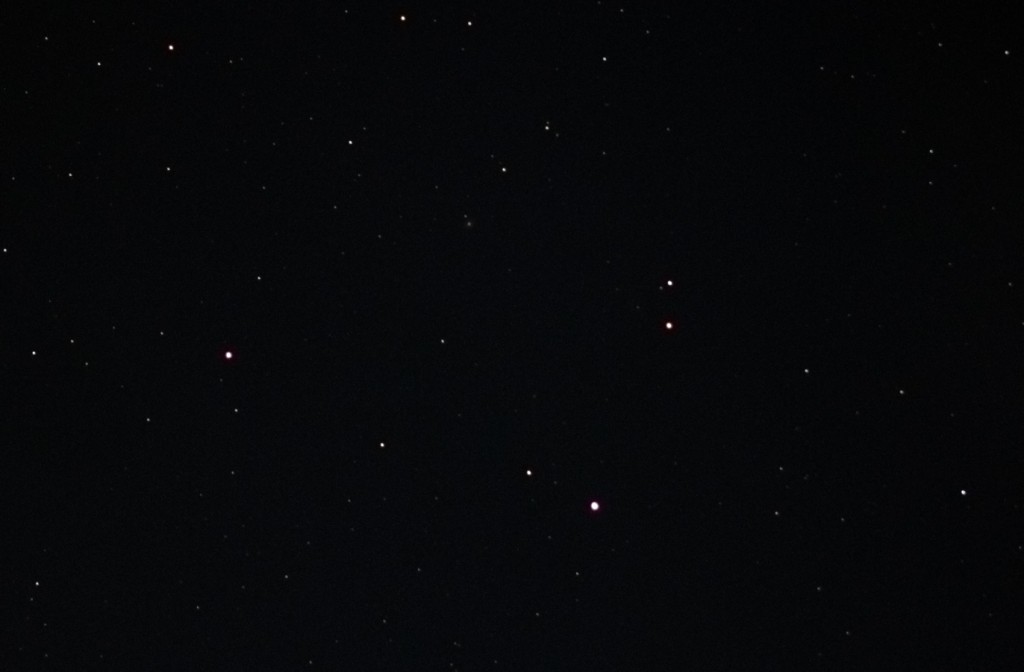
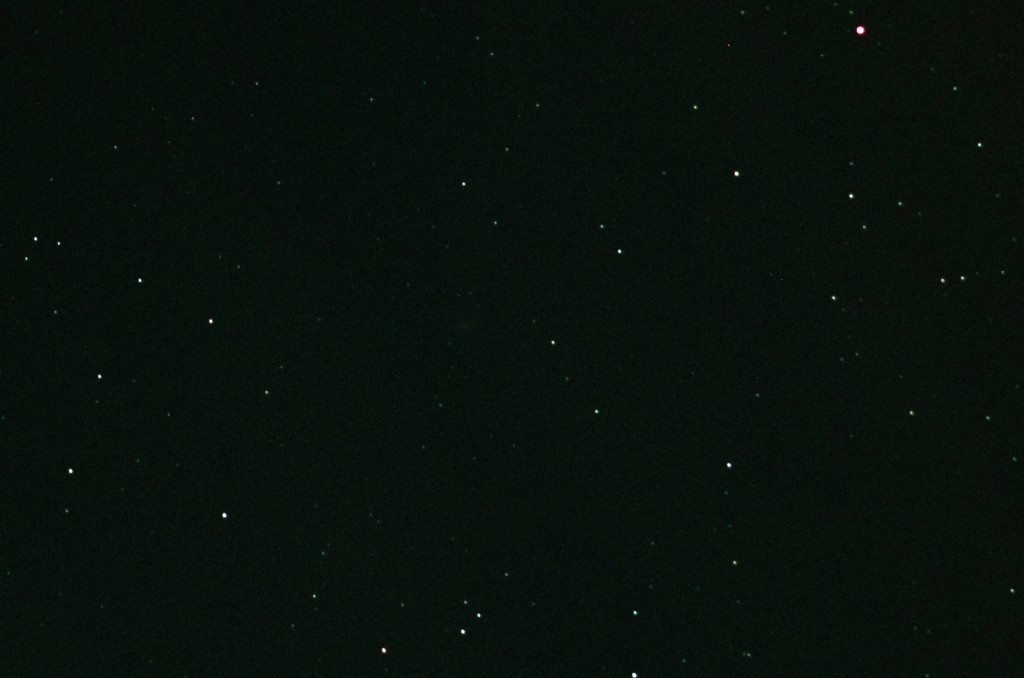
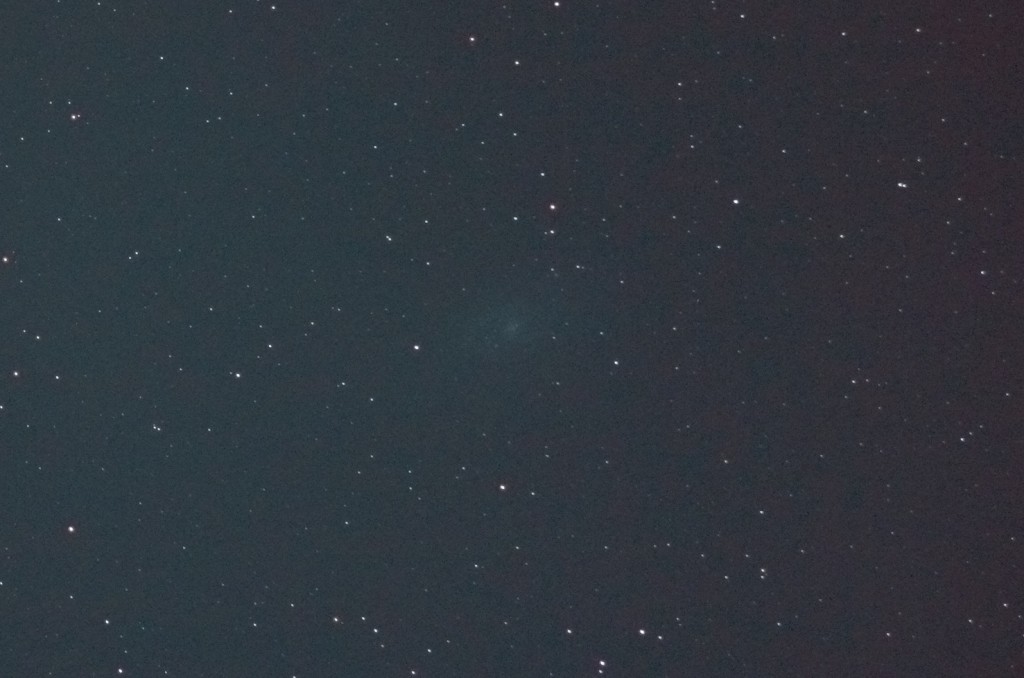
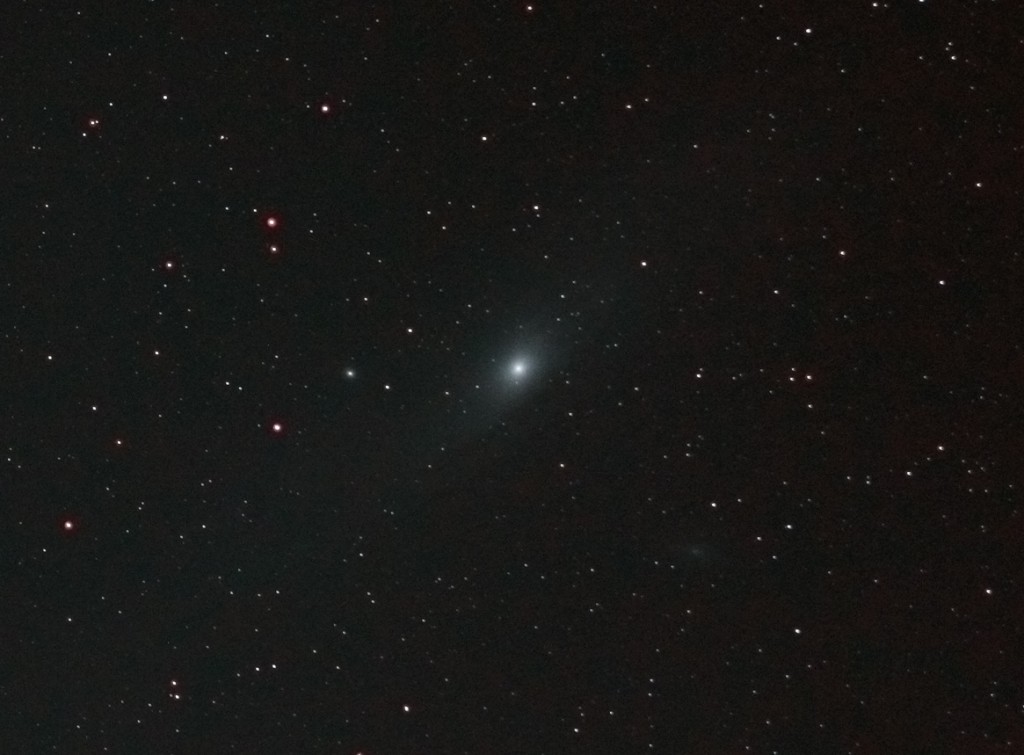
Leave a Reply